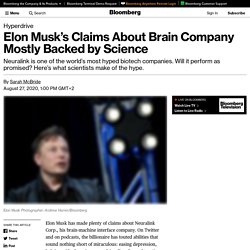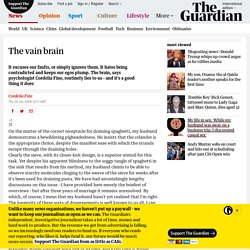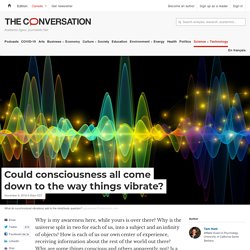

Neuralink: What We Know About Elon Musk's Brain Startup. Photographer: Andrew Harrer/Bloomberg Elon Musk has made plenty of claims about Neuralink Corp., his brain-machine interface company.

On Twitter and on podcasts, the billionaire has touted abilities that sound nothing short of miraculous: easing depression, helping with obsessive compulsive disorder and treating traumatic brain injuries. Now, Neuralink, whose work has largely been shrouded in secrecy, is set to give a public “progress update” on Friday. In the run-up to the big reveal, Musk has allowed some glimpses at the company’s technology. An early look came a year ago, when the Neuralink team showed off tiny electrodes on thin, flexible probes they said would be able to penetrate brain tissue with minimal damage, and ultimately help restore brain function to people with traumatic brain injuries.
¿El colesterol 'malo' nos defiende de la COVID-19? Toda la población mundial es susceptible de enfermar de COVID-19, pero los datos que tenemos hasta ahora del Ministerio de Sanidad muestran que los mayores, los fumadores, las mujeres embarazadas, las personas con obesidad y los pacientes de cáncer tienen mayor riesgo de infectarse.

También aquellos aquejados de alguna enfermedad cardiovascular. Por eso, sería razonable pensar que los niveles de colesterol estarían asociados con un mayor riesgo de padecer la enfermedad o de tener un peor pronóstico si se han infectado. Pues bien, podría ser que no fuera así. Más bien al contrario. La batalla contra la COVID-19 está generando una masiva cantidad de información científica. En el estudio se evalúa el perfil lipídico en 71 pacientes de COVID-19 y se compara con 80 controles sanos.
Como digo, los artículos van saliendo como setas en otoño. ¿Cómo puede ser eso? Más preguntas que respuestas. The vain brain. On the matter of the correct receptacle for draining spaghetti, my husband demonstrates a bewildering pigheadedness.

He insists that the colander is the appropriate choice, despite the manifest ease with which the strands escape through the draining holes. Clearly the sieve, with its closer-knit design, is a superior utensil for this task. Yet despite his apparent blindness to the soggy tangle of spaghetti in the sink that results from his method, my husband claims to be able to observe starchy molecules clinging to the weave of the sieve for weeks after it's been used for draining pasta. We have had astonishingly lengthy discussions on this issue - I have provided here merely the briefest of overviews - but after three years of marriage it remains unresolved. Could consciousness all come down to the way things vibrate? Why is my awareness here, while yours is over there?

Why is the universe split in two for each of us, into a subject and an infinity of objects? How is each of us our own center of experience, receiving information about the rest of the world out there? Why are some things conscious and others apparently not? Is a rat conscious? A gnat? These questions are all aspects of the ancient “mind-body problem,” which asks, essentially: What is the relationship between mind and matter? The mind-body problem enjoyed a major rebranding over the last two decades.
Chalmers thought the mind-body problem should be called “hard” in comparison to what, with tongue in cheek, he called the “easy” problems of neuroscience: How do neurons and the brain work at the physical level? Over the last decade, my colleague, University of California, Santa Barbara psychology professor Jonathan Schooler and I have developed what we call a “resonance theory of consciousness.” All about the vibrations. Why Writers Are the Worst Procrastinators. When I started asking around about this phenomenon, I was a bit skeptical.

After all, us old geezers have been grousing about those young whippersnappers for centuries. But whenever I brought the subject up, I got a torrent of complaints, including from people who have been managing new hires for decades. They were able to compare them with previous classes, not just with some mental image of how great we all were at their age. And they insisted that something really has changed—something that’s not limited to the super-coddled children of the elite. “I’ll hire someone who’s twenty-seven, and he’s fine,” says Todd, who manages a car rental operation in the Midwest.
Neuralink and the Brain's Magical Future. Note: If you want to print this post or read it offline, the PDF is probably the way to go. You can buy it here.And here’s a G-rated version of the post, appropriate for all ages. Last month, I got a phone call. Okay maybe that’s not exactly how it happened, and maybe those weren’t his exact words. Silicon Valley’s Quest to Live Forever. On a velvety March evening in Mandeville Canyon, high above the rest of Los Angeles, Norman Lear’s living room was jammed with powerful people eager to learn the secrets of longevity.
When the symposium’s first speaker asked how many people there wanted to live to two hundred, if they could remain healthy, almost every hand went up.